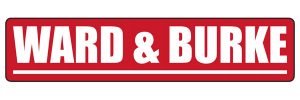Tophill Low Fish Pass (2020)
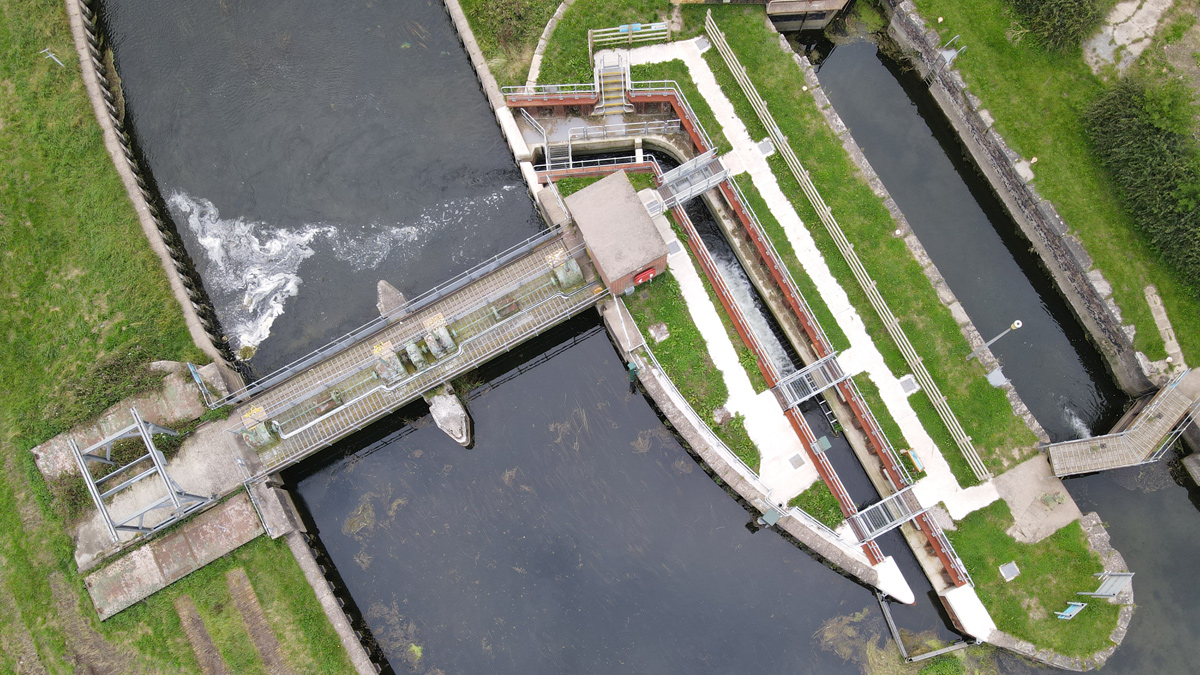
Tophill Low Fish Pass - Courtesy of Ward & Burke
Tophill Low Water Treatment Works supplies Hull and surrounding areas with clean water abstracted from the River Hull at Hempholme. The lock, which is managed by the Driffield Navigation Trust, is a very busy passage for narrow boats during the spring and summer months. The raw water intake capacity is managed by Yorkshire Water in accordance to the abstraction license – the Environment Agency use equipment to monitor the river’s water levels both upstream and downstream and use a the weir as a gauge for flood reasons. In March 2020, Yorkshire Water completed the construction of a new 25m long and 1.2m wide integrated fish and eel pass between the middle of the actuated weir gates and the narrow boat lock gates.
Background
Throughout AMP6 (2015-2020), Yorkshire Water invested £10m in the creation of 13 new fish passes to facilitate the upstream and downstream passage of fish that were feeding, seeking refuge, and for migrations between freshwater and marine habitats. The primary drivers are compliance with the Natural and Rural Communities Act (NERC) 2006 and the EU Water Framework Directive, whilst also aligning with Yorkshire Water’s internal driver to ‘take responsibility for the water environment for good’.
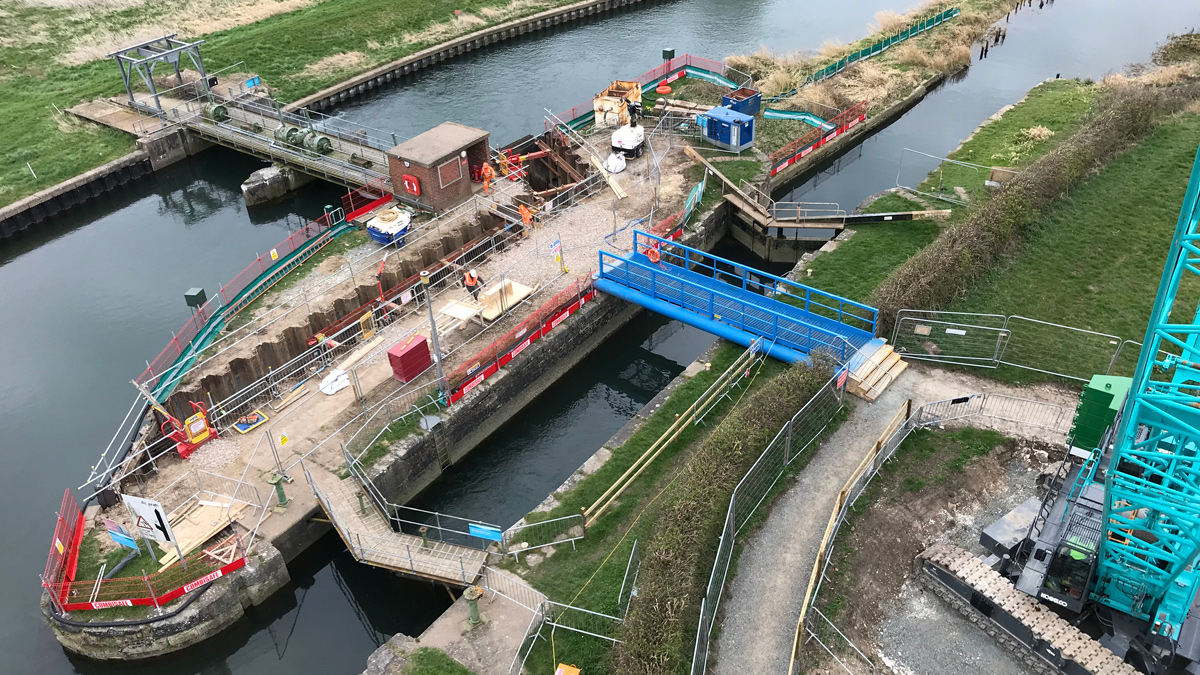
Tophill Low Fish Pass situated between River Hull and Hempholme Lock – Courtesy of Ward & Burke
Optioneering and design
JBA Consulting and Ward & Burke Construction were appointed by Yorkshire Water to undertake the detailed hydraulic and structural design of a single Larinier fish pass.
Numerous options were reviewed that would provide passage for the fish for the next 100 years which were viable from both a construction/operational and financial point of view. During early outline planning, Yorkshire Water identified this project as being technically difficult and was at risk of not being viable, and decided to take a collaborative approach to the design by inviting their contract partner Ward and Burke to be involved during the early feasibility stages to assist with getting a solution that could meet the above requirement.
The initial design to ensure that there was no effect to the water levels was the to install a motorised actuated fish passage which would operate in tandem with the existing weir, however the cost of construction and the overall future maintenance meant this option was deemed not financially viable. An offline fish pass was also investigated, however the lands surrounding the River Hull could be at risk to flooding, so this option was also found to be unviable.
After a number of further options were discounted, the option of installing the fish pass between the weir gates and the lock (which had initially been discounted due to lack of room for construction) were discussed further and an approach was agreed upon which would allow the fish pass to be constructed which would not affect river’s water levels.
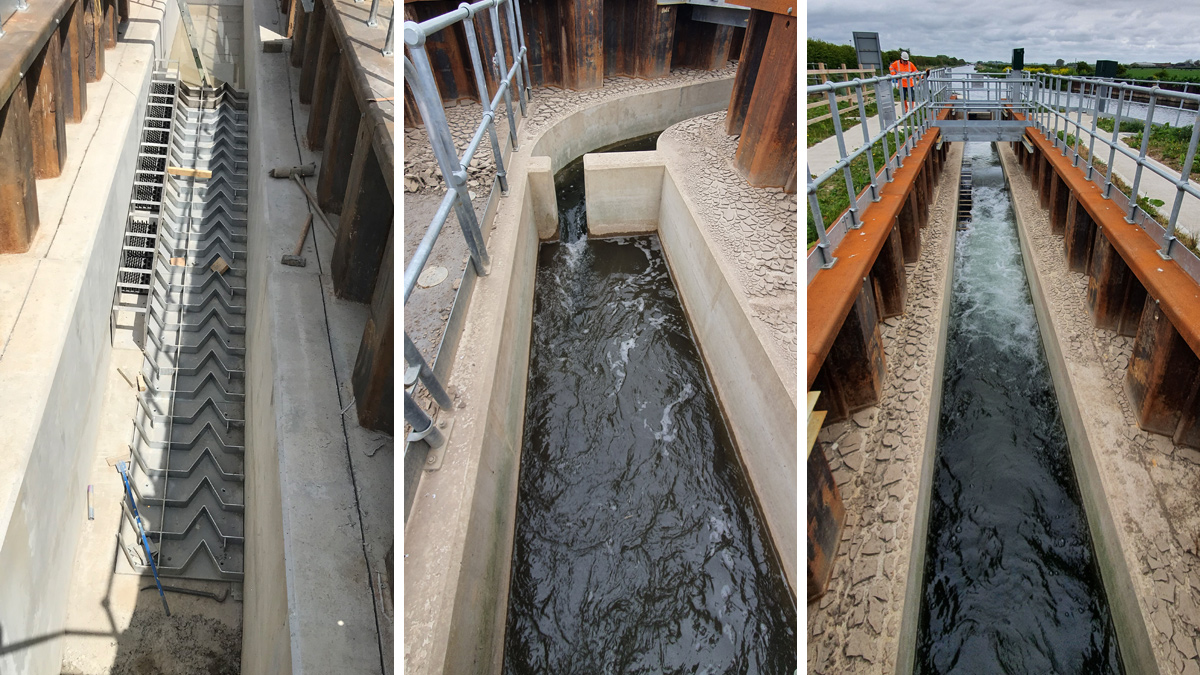
(left) Larinier fish pass tiles combined with the Eel trough (middle) downstream flow restrictions and (right) fish pass in operation – Courtesy of Ward & Burke
Tophill Low Fish Pass: Supply chain – key participants
- Principal contractor: Ward & Burke
- Principal designer: JBA Consulting
- Eel and lamprey tile supplier: Berry & Escott Engineering
- Floating debris boom: Bolina Ltd
- Larnier baffle fabrication: C&D Engineering
- Silent sheet piling: Watson Hillhouse
- Diving and underwater cutting services: Northern Divers
Construction of the fish pass
Ground investigation and precondition surveys revealed that there were a number of obstructions found which would prevent the use of conventional trench support installation.
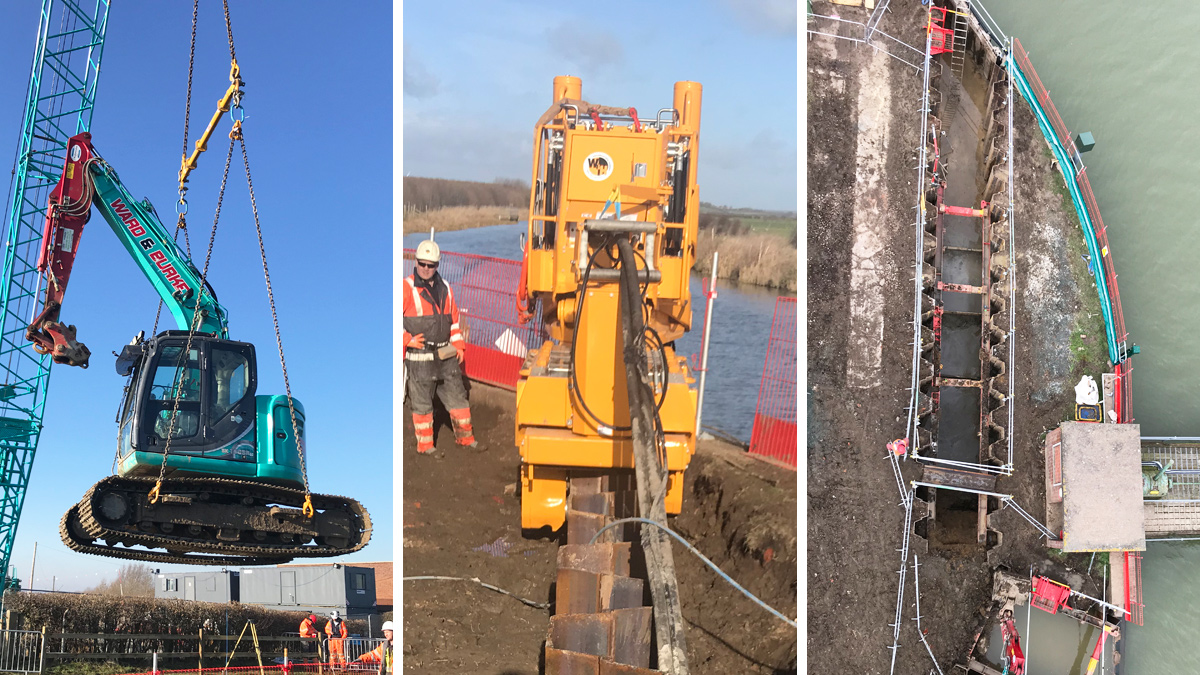
(left) All plant and equipment was hoisted over the lock channel and (middle) the Giken Silent Piler was used to eliminate vibrations which could cause structural damage, and (right) view of sheet piles installed with excavation almost complete – Courtesy of Ward & Burke
There was minimal information about the construction of the lock’s channel walls, but there was sign of degradation, so it was decided that the construction of a bridge to allow heavy plant to cross it posed too much of a risk. Additionally, the space required to allow working space for the wall construction was not available, so it was agreed to install permanent sheet piles as the main trench support. To offset the cost and the carbon footprint of this, JBA Consulting designed the concrete wall to only extend to between 1.2m and 2.4m; whereas normally they would have extended to ground level which would have resulted in up to 5m high RC walls.
A further requirement to ensure a level could be accurately monitored was the requirement that the wall dimension 5m upstream of the fish pass needed to be within a tolerance of +/- 2mm. To ensure this, Ward & Burke designed and manufactured a bespoke shutter that would meet these requirements.
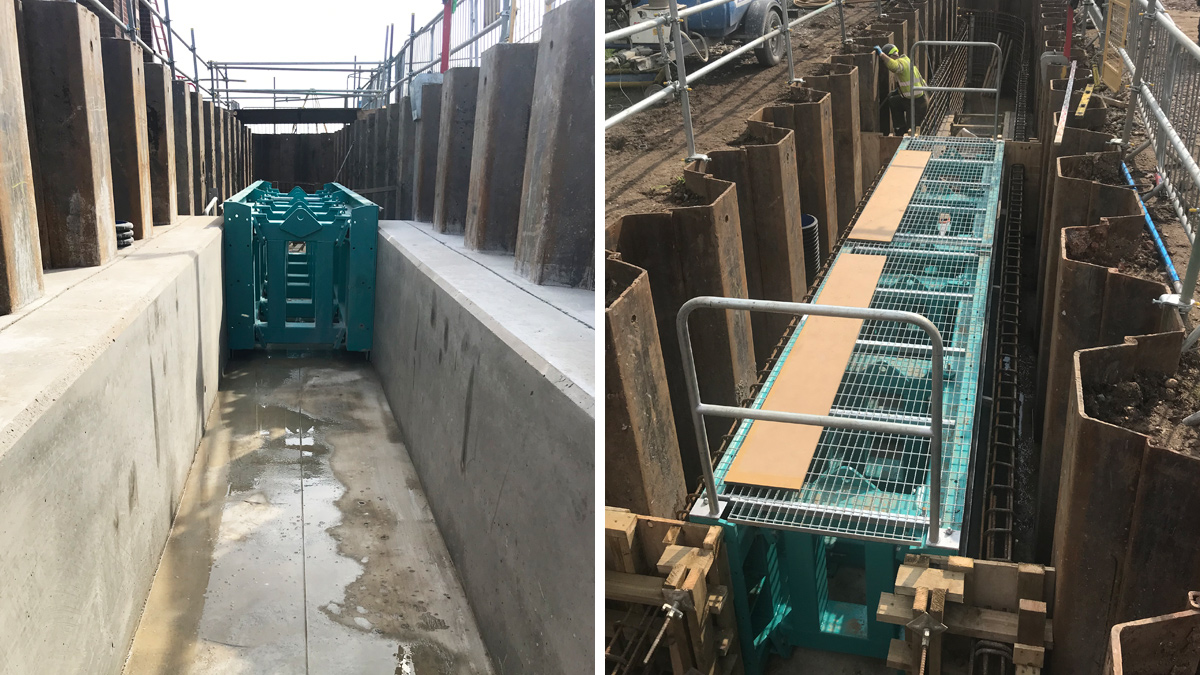
Bespoke shutter to provide the required wall tolerance – Courtesy of Ward & Burke
Due to the requirement of limiting the volume of water entering the fish pass whilst maintaining suitable attraction for coarse fish, the pass was significantly narrowed at the outlet, resulting in less velocity on the slope while keeping sufficient ripples and whitewater to attract fish. This requirement potentially posed a future maintenance issue with debris blocking the passage and this risk was eliminated with the introduction of a Bolina floating boom.
The next stage of installation was the galvanised Larinier baffles for the fish pass, providing a suitable environment for the fish to negotiate the pass. These were made by C&D Engineering who have facilities at their engineering workshop to cut, weld and galvanise the baffles as per the design. It was critical that the shape, spacing and height of the baffles were correct to avoid flow disruptions leading to debris getting jammed within the baffles, making the fish pass ineffective.
These baffle sections were slung at an angle and placed to the grade to ensure accuracy of +/- 5mm. When these were all in position and fixed to the base, a mass grout pour was applied to the underside of the all the baffles to ensure it was fully sealed.
The Eel pass ran parallel to the fish pass within the same channel where a stainless-steel channel was formed to provide the slower/less turbulent flows than the fish pass.
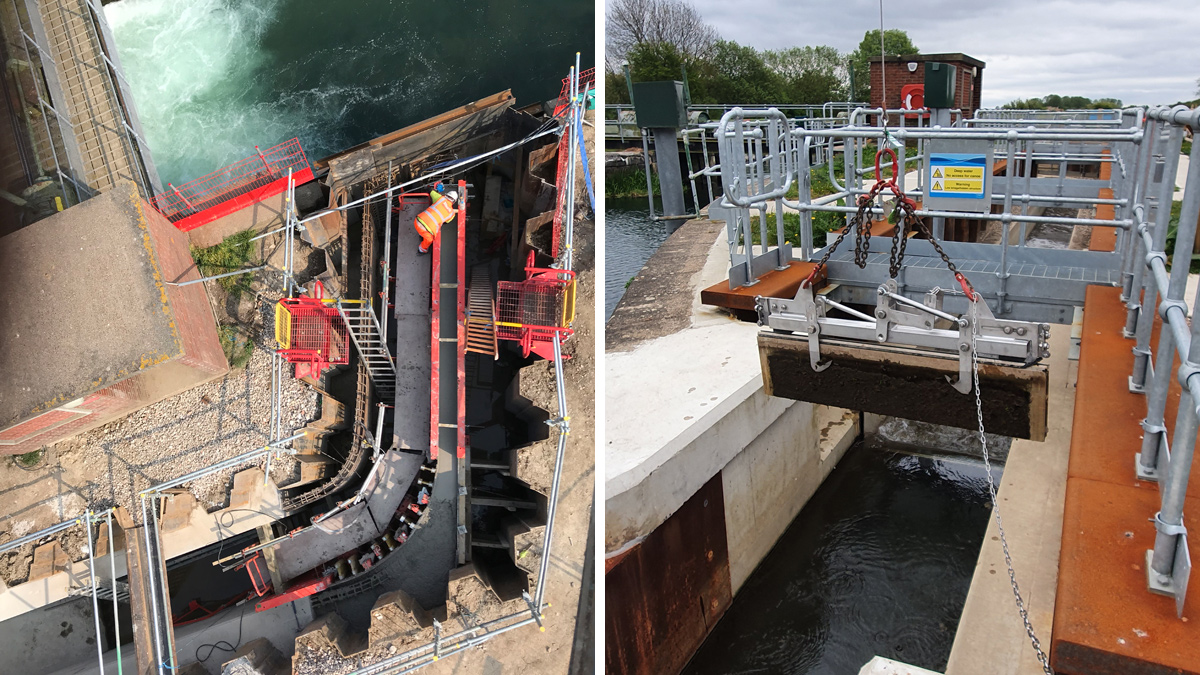
(left) Completion of the radial wall section and (right) stoplog removal – Courtesy of Ward & Burke
Completion
Surveys and inspections of the fish pass by JBA Consulting and the Environment Agency concluded that the overall design and construction of the structure was satisfactory and came within the design specification. To allow the fish pass to open both upstream and downstream the sheet piles were cut and removed by Northern Divers.
Tophill Low Fish Pass was completed and opened March 2020. The fish pass has been designed so that the flow can be fully isolated from water both upstream and downstream to allow future maintenance of the pass with the aid of stainless steel stoplogs and bespoke lifting equipment.




